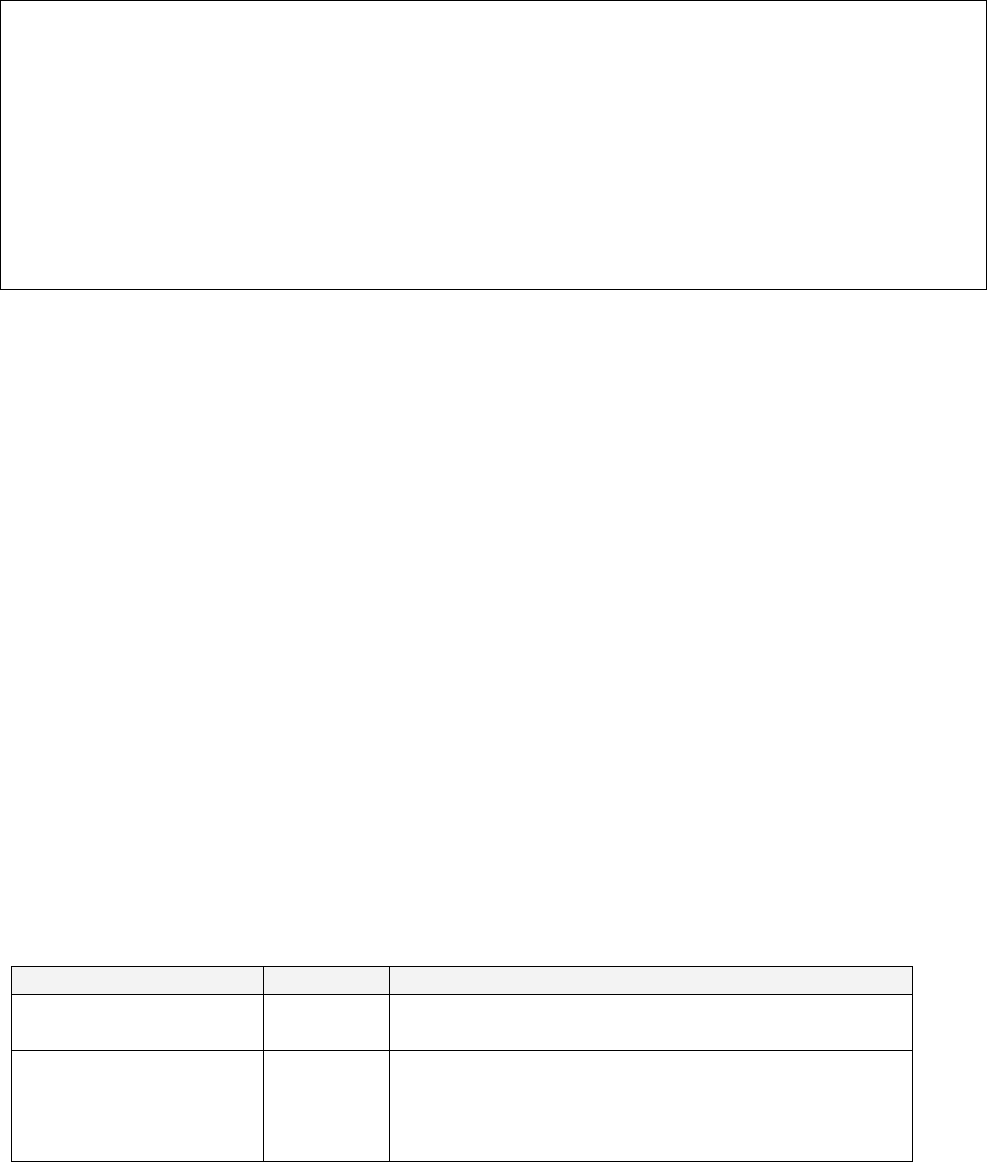
Copyright © TANDBERG 2008 Reference Guide Version 3.0 rev 3.0 4
</member>
<member>
<name>faultString</name>
<value>
<string>duplicate conference name</string>
</value>
</member>
</struct>
</value>
</fault>
</methodResponse>
The complete list of command messages, their required and optional parameters, and the expected responses
are detailed in the sections below. The possible fault codes are listed in section 11. Appendix B - contains
examples of some messages and their corresponding responses.
2.3 Unicode support
Parameters in this version of the API can be in ASCII text or unicode (UTF8). In order to distinguish between
these encodings, any of several methods can be used. If no method is present, ASCII is assumed.
2.3.1 HTTP Headers
There are two different ways of specifying unicode in the HTTP headers; either using "Accept-Encoding:
utf-8"
, or modifying the Content-Type header to read "Content-Type: text/xml; charset=utf-
8"
.
2.3.2 XML Header
At the top of each XML file, the <?xml> tag is required. This API will accept an additional encoding
parameter with value UTF-8 for this tag, i.e. <?xml version="1.0" encoding="UTF-8"?>.
2.4 Common message elements
2.4.1 Authentication
All messages must contain a user name and password as follows:
Parameter Type Comments
authenticationUser String Name of a user with sufficient privilege for the operation
being performed. The name is case sensitive.
authenticationPassword String The corresponding user’s password. This parameter is
ignored if the user has no password set - note that this
differs from the web interface where a blank password
must be blank.


















